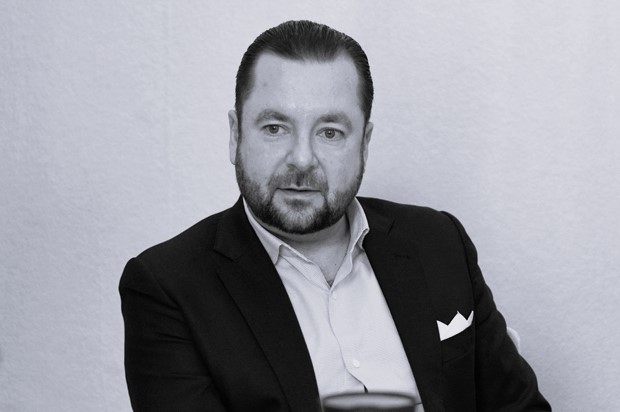
The "E" must go on
Issues discussed at AGMs are becoming more diverse with ESG matters taking up more space on the agenda. The last part of the ESG trilogy, authored by Stefan Björkman, CEO of Föreningen Konstsamfundet, discusses why it is important for investors to keep learning and pushing for change.
More urgent and immediate threats on our lives and livelihoods have pushed environmental issues lower in the global news feeds. Although more thoughtful observers stress how these other acute problems also partly link back to the environment, the focus on "E" is not as undivided as activists would hope.
Despite the decrease in global attention, environmental issues are very much the topic of the day in business and finance. Annual general meetings increasingly include proxy votes on all ESG matters. Even Warren Buffet faced a governance vote at home in Omaha. Social issues are slightly more in the spotlight given the pandemic but in addition to “G” and “S”, ”E", mainly in the form of climate related issues, is clearly a part of the mainstream of an accelerating trend. A trend that has already fostered an anti-trend. Are these issues really for the AGMs?
Like it or not, the issues are on the agenda. And given that we have to vote, we should build up competence to take a stand on the "E".
Let's take a dry run. Climate change and CO2 footprint – where do we stand? Well, the scientists are almost unanimous about the direction – it’s just the severity that is debated. Extreme weather is definitely more likely. The social impact will be considerable. The obvious policy would be to move towards continuous improvement with more or less ambitious targets.
Biodiversity? An investor's take would be to mitigate risk, especially in turbulent times – diversify. It comes at a cost that you might be tempted to cut. That would make you vulnerable. But on the other hand, no risk, no return. On one side, all risks can’t be fully hedged and on the other, not hedging at all is reckless. It applies to investment portfolios and it certainly applies to supply chains. It applies to any system, including ecosystems. That is nature - the ”E”.
Regardless of your stance on the finer points of climate change – irreversible or not, the role of human activity, or the credibility of the IPCC – the essential word is change. The climate has changed throughout history and it will change also in the future. Change is certain and nature's way of mitigating it is to diversify.
We know very little of the interaction and the dependencies between the different layers of nature. Plants and animals are the visible organisms already displaying an impressive amount of diversity. But let's consider the smaller, more numerous and older layers of the “E”. 140.000 species of viruses alone in our gut. A trillion species of bacteria of which we have named a minimal fraction. Some million species of fungi of which we described a few percent, and a similar number of insects of which we know roughly as little. Humility is a good starting point. Global supply chains and investment portfolios look simple in comparison.
Two small examples to illustrate the value embedded in biodiversity as a food for thought. Antimicrobial resistance is a fundamental threat. Antibiotics do not work against resistant superbugs and our ability to synthesise new drugs appears to be insufficient. Insects have had to tackle bacteria much longer than us humans. Ants have been found in the Amazon that farm fungi for antibiotics. Nature itself could prove to be the source of a diverse set of already pre-trialed drugs. As a matter of fact, the leaf-cutting ants’ ability to do this was unknown to humanity until very recently.
Another example are the different kinds of bacteria that have had to tackle viruses for millennia. When researchers took a closer look, they found the most efficient gene technology to date. Despite it happening under our noses for such a long time, we only found out about it a decade ago. The scientists who made the discovery won the Nobel prize.
It does not take much research to realise that we really have no idea of the true cost of reduced biodiversity in the short or the long term.

Leaf cutting ant / Picture by Vlad Tchompalov
Human interventions often have unintended consequences on the “E”. The world we live in is full of examples, such as making farming more efficient with modern methods. It enabled our crops to increase but killed the ecosystem in the soil underneath the fields. Agriculture has become a chemical addict. This also contributes to climate change. Overfishing is a similar example, as is plantation-styled forestry.
Do these issues belong in the annual general meetings? Are these relevant matters for corporations and their shareholders? Naturally there are clear-cut cases. Big polluters using technology that can be replaced but remain in use only for some marginal economic gain for a small group of people.
Unfortunately, most cases are more complicated and impenetrable regardless whether you try to apply common sense or AI. There are countless shades of grey to consider.
Nevertheless, that only strengthens the case. The shareholders are the only ones that can direct companies to aspire to a level of “E” in their business practise that exceeds laws and regulations. The shareholders are also the only ones with the mandate to do so.
Consequently, the company's stance on climate change and biodiversity belong alongside audit and compensation matters in the AGM. The “E” must go on!
This is the final piece that follows All about the "G" and Give “S” a chance. It completes the ESG trilogy authored by Stefan Björkman.



